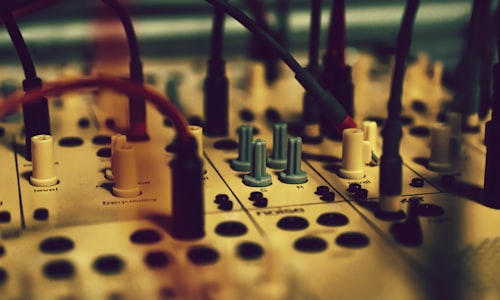Electronic Music facts
While investigating facts about Electronic Music, I found out little known, but curios details like:
When Daft Punk recorded an interview with Giorgio Moroder (godfather of electronic music) for their song "Giorgio by Moroder", they used microphones from 60s to 00s, so when he spoke of a period in his life, it would be recorded with a microphone that existed within the same timeframe.
In 1994, in an attempt to ban raves, the UK passed a law banning public performance of music “wholly or predominantly characterized by the emission of a succession of repetitive beats.” In response, the electronic band Autechre issued a track, Flutter, in which no two bars have the same beat.
In my opinion, it is useful to put together a list of the most interesting details from trusted sources that I've come across. Here are 50 of the best facts about Electronic Music I managed to collect.
-
The Beatles started a company called Apple Corps in 1968, which included Apple Electronics, Apple Films and Apple Music. In 1978 they sued and won against Apple Computer (now Apple Inc) for trademark infringement.
-
Alfred Hitchcock's "The Birds" didn't have a musical soundtrack because he wanted the auditory focus of the movie to be on the unsettling and experimental electronic sounds produced by a strange instrument called the trautonium, a predecessor to the analogue synthesizer.
-
A blackout in New York City (1977) contributed to the growth of hip hop music as looting allowed a number of people to get access to expensive DJ equipment from electronic stores. From this moment on, Hip Hop, barely known outside the Bronx, grew at an astounding rate.
-
When Simon Cowell asked famous UK DJ Fatboy Slim to be involved in a potential talent series for DJs, Slim (and other top-tier figures in UK electronic music) told him to "fuck off".
-
In Germany between 1935 and 1940 the Lichtton Orgel was marketed.
-
Between 1935 and 1975 the Hammond Organ was sold, created by John Hanert and Laurens Hammond.
-
New Wave artists and electronic bands emerged in the 1970s and 1980s that featured the synthesizer. These included Tangerine Dream, Kraftwerk, Gary Numan, Yellow Magic Orchestra, and one of the most famous and celebrated musicians of the 20th/21st century - David Bowie.
-
Electronic organs were used by a variety of musicians and bands in the 1960s including Iron Butterfly, The Doors, Bob Dylan, and Lawrence Welk, and in styles ranging from acid rock to gospel music.
-
In the 1970s the synthesizer electronic organs and digital organs began to appear in the marketplace, followed by more modern digital organs in the 1980s.
-
Electronic organs used rapidly spinning tonewheels (magnetic wheels) to create sound instead of reeds and pipes like the pipe organs and reed organs before it.

What is true about electronic music?
You can easily fact check it by examining the linked well-known sources.
In the 1932 the Rangertone was released by Richard Ranger.
The Amen break, a six-second audio clip from the 60s that spawned several entire subcultures. It is one of the most sampled loops in contemporary electronic music and arguably the most sampled drum beat of all time. - source
In 1957 RCA installed the Mark II Sound Synthesizer at the prestigious Columbia-Princeton Electronic Music Center. Famous composers who used this early synthesizer include Otto Luening, Vladimir Ussachevsky, and Charles Wuorinen.
The term 'sound synthesizer" was developed by RCA. RCA created an Electronic Music Synthesizer in 1951, followed by a programmable sound synthesizer.
Electronic organs after World War II were referred to as spinet organs because of their configuration. The spinet organ resembled a piano and was easier to learn and cheaper to manufacture.
The Hammond electronic organ almost completely replaced the reed organ in the marketplace.
The laser harp is made of electronic and light components and can be hooked up through MIDI or USB to its controller which might be a laptop or computer.
A musician that plays the electronic organ is referred to as an organist.
The early features of the electronic organ models between 1950 and 1970 included one-touch chords, electronic rhythm, repeat percussion, automatic walking bass, autochord and tape players.
Genres of music most commonly associated with synthesizers include house, techno, techno, electronic, and dance, but it is also used in many other music styles.
The chord organ emerged after the spinet organ and was even easier to play than the spinet organ. The chord organs in the 1950s used vacuum-tube technology.